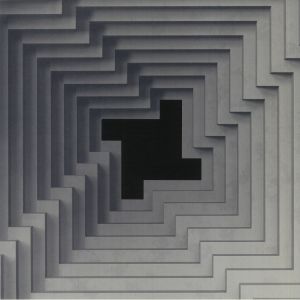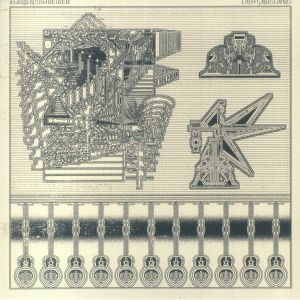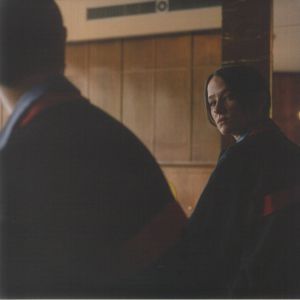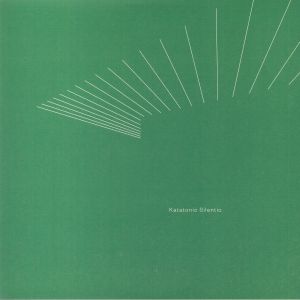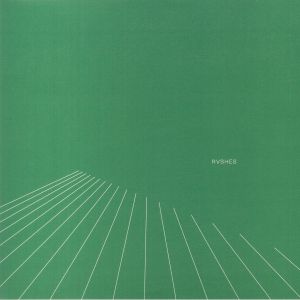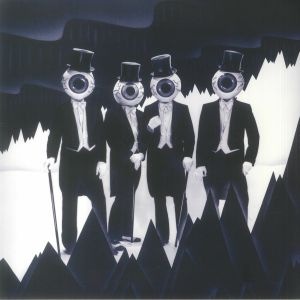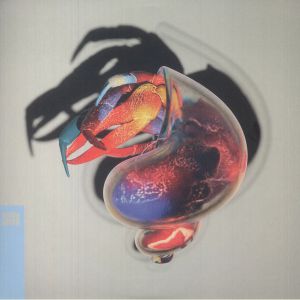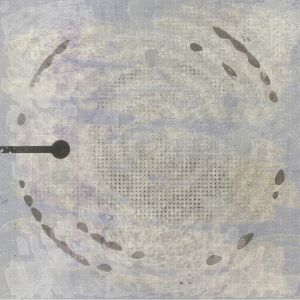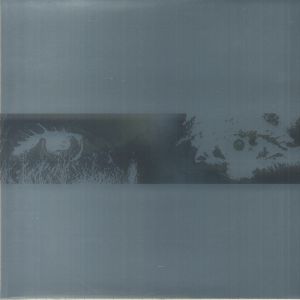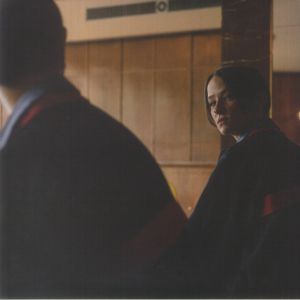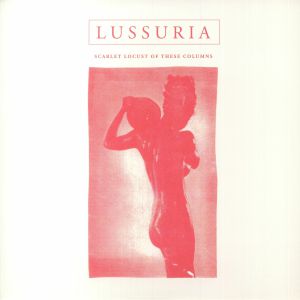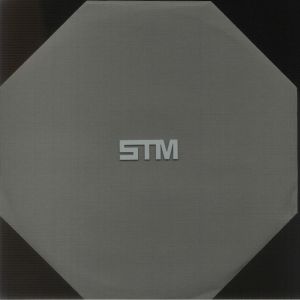
Juno Recommends Experimental
Juno Recommends Experimental: August 2023
Read more...
1
Review: While his AR antics and massive stage shows might be a far cry from the subversive rave culture he came up in, Aphex Twin remains one of the most fascinating and gifted electronic dance music producers of his generation. Get past the fanfare and bluster, and it's still an incredibly exciting prospect to be opening up a new box of his charms, and he's as generous as he's ever been on this new four-track EP. As a key architect of the braindance sound (whether he likes the tag or not), Richard D. James demonstrates his gift for uncanny emotionality and dexterous drum programming on the lead single 'Blackbox Life Recorder 21f', hitting a spot not too far from the realm of his last album Syro and The Tuss material. With a lush fold-out sleeve to house it all in, it's another fine addition to the canon of a true cult phenomenon.
...Read more
out of stock $24.32
2
Review: It almost seems redundant, writing something about the latest fabric Originals release. If you could think of a more enticing double-header for fans of bass, Leftfield techno, and UK-hued alternative electronic music then we want to hear it, with both producers here moving well beyond cult status and into the world of households names in homes well beyond their original audiences. And yet, remarkably, neither have strayed too far from where they initially set stalls. Hyperdub boss Kode 9 proves this first, with the sightly dizzying 'Infirmary'. Born from a combination of loose, open, galloping UKF and organic techno, with its foundations rooted in footwork, it's a bounding high-energy body mover that refuses to quit. Flip it and find Burial edging closer to 'dance music' than many might be used to, although it's a deep, moody interpretation packed with the spellbinding vocal flourishes of a mutant garage and suppressed, fidgety drums so subtle they're close to background noise.
...Read more
out of stock $19.66
3
Review: Yu Su's eclectic, organic sound is one that has been perfected over every consecutive release, and reaches its yetmost peak with 'I Want An Earth'. As if to make a defiant cry for a habitable planet, this one contains four tracks inspired by the artist's time spent in the deserts of Ojai, California, and the coastal areas of British Columbia, presenting a deeply pad-driven, warm and modular sound to match. A dazzling work of odd-timed cosmickery and varied sonics.
in stock $18.79
4
Review: The Udacha label might have been away for a while but is now back with a vengeance. First up for this return is a new long player by the mighty fine Kurvenschreiber quarter, which is made up of Sergey Komarov, Vlad Dobrovolski, Ilya Sadovski and Alexey Grachev. These sound artists have been excelling in their field for some 10 years now and use synths as well as found sound objects to create their work. Magnetic tape loops, various instruments, pre-recorded loops, shortwave radios, transformers and much more give rise to this unique record which mixes up Boolean jazz, kurventronika and post-rock.
...Read more
in stock $11.05
5
Review: Caterina Barbieri has rightly earned her position as one of the leading lights in modern minimal synthesis, following the legacy of the great composers of the 20th Century and presenting stark, compelling ideas revolving around spare, purposeful compositions. Her 2019 album Ecstatic Computation was her calling card to the world, and many high profile performances have followed since. Now we're being invited back into the thinking behind that first record with an expressly-framed sister piece recorded at the same time called Myuthafoo. Hey algorithmic approach to composition yields powerful effects as she ruminates on time, space, memory and emotion, presented across six additional pieces which add wonderfully to the narrative from her debut album.
...Read more
out of stock $31.51
6
Review: Hyperdub continues to stamp its authority down on a wide variety of electronic music, in this case throwing the light, bouncing club-ready sounds of Canada's Jessy Lanza into the mix of a back catalogue that touches on everything from ambient to dubstep and footwork. But, while we open on the snare-happy garage-house of 'Don't Leave Me Now', and tracks like 'Drive' also look to the dancefloor, things don't stay there long. 'Don't Cry On My Pillow', for example, is a low stepping piece of alternative electronic soul. 'Big Pink Rose' opts for synth refrains and staccato drums to create a steamy, heady neon r&b brew with added yacht. 'Double Time' deconstructs pop balladry and makes it sound lo-fi yet huge, 'I Hate Myself' seems to take a lead from tropicalia-hued, leftfield electronica.
...Read more
in stock $21.28
7
Review: Delsin's Mantis series continues to dive into hidden corners of techno abstraction with this outstanding display from Italian producer Katatonic Silentio. Often found releasing albums on Ilian Tape, her approach to glitchy, exquisitely sculpted electronics translates perfectly to the immersive, dubby mode of the label, resulting in four elegant and original pieces that strike a balance between fragmentation and hypnotism. Whether it's the tense patience of 'To' or the loaded bass pressure of 'Hide' that draws you in, this is a record which will yield repeated discoveries whether you approach it as a passive listener or a curious selector.
...Read more
out of stock $13.82
8
Review: Three years on from the series' inaugural 12-inch - a superb collection of cuts from Forest Drive West, Delsin's Mantis Series notches up its 12th release. It comes courtesy of Nullfunkt contributors RVSHES, AKA Dylan Brownsword and James Parker. To our ears, it seems to have two inspirations: twisted, polyrhythmic techno of the sort associated with the likes of Livity Sound and Timedance, and the cyclical, marimba-heavy American minimalism of Steve Reich. It's a smart formula that the pair explore expertly over six differing variations on a theme. Comparse and contrast, for example, the intoxicating, mind-altering drum-work of 'RHS III', the acid-laden polyrhythmic hallucination that is 'RHS IV', the melodious and delay-laden shuffle of 'RHS II', and the pulsating, echoing, genuinely psychedelic techno stomp of 'RHS VI'.
...Read more
out of stock $14.37
9
Cat: EF 001. Rel: 10 Jul 23
Experimental/Electronic
Review: Flesh & The Dream is the pairing of Heather Leigh and Shackleton and between them they take a deep dive into a world of psychic dancehall on Choose Mortality, their debut album together. To say it is experimental is an understatement - they manage to mangle rhythms and distort sound, layer up oozing synths and deranged folk vocalisations into an album of psychedelic suspense and unease. None of these tracks ever sit still, whether it's the trippy church communion of 'Diviner Of The Flesh', hellish underworld electronica of 'Before The Flood' or depraved dub of 'Thirst For Disappearance'. Brilliantly bonkers.
...Read more
out of stock $30.13
10
Review: Definitely not to be confused with the chain of high end steak houses that have established themselves in cities across the UK, Hawksmoor is actually the lone project of James McKeown, and is a direct nod to the Hawksmoor churches of London. It's also an ode to German Krautrock pioneers of the 1970s, such as Cluster, Roedelius, and Michael Rother. But this isn't a case of simply rehashing the golden years of a genre that has inspired a huge cult following, particularly among musicians, since it first evolved as a mutation of psyche, punk, prog, synth and various other then-nascent sounds. Instead, think of a haunting post-modern electronic symphony made on all-analogue equipment. An homage to the past in a vision of the future, it deserves its place as one of Soul Jazz's few non-archival releases.
...Read more
out of stock $26.52
11
Review: Using only a guitar and the occasional synthesiser, this two-track debut album is a visceral experience, with the record quickly pulling us into a listening world thick with uncertainty, unease and disorientation. At times, the experience is just plain chilling, with some of the more crystalline moments on 'Track 2' invoking the sinister melodies of a 1970s horror movie soundtrack. Amazingly, these aren't the darkest sections, either. The feeling of doom is omnipresent throughout, with distorted noises nodding to the clank and screech of old rusted metal, or simply the strange sounds that come with being in the house alone at night. Environmental recordings are interspersed, which only adds to the sense of not quite being alone in this place. A moody, highly compelling ride that sends shivers down the spine for both musical and atmospheric reasons.
...Read more
in stock $24.32
12
Cat: NRTLP 008DX. Rel: 10 Jul 23
Experimental/Electronic
Review: On their Eskimo album - which is in part famous because of its creepy artwork - The Residents explore with music, found sounds and sonic collages, the legends and myths of north America's native coastal tribes. The group travelled to the area to make field recordings, learn from and record with those peoples and then left for home with what they found. It took years for the album to come out and now it arrives with a booklet on double 12". It's pretty freaky to be honest - weird vocals, eerie synth whispers, distant animal grunts and breaking waves all make for unsettling and hugely evocative soundscapes.
...Read more
out of stock $32.05
13
Review: Japanese maverick Kohei Matsunaga, aka NHK yx Koyxen explores far and wide on this new album Climb Downhill 2. It comes after many years of unusual but ultimately excellent sounds on the likes of Diagonal, DFA, Pan, L.I.E.S. and right back to Mille Plateaux and WordSound. Across 13 cuts he truly gets loose and abstract, mishmashing endless genres and sub-genres into lively cuts that are both dance yet cerebral. His sketch-pad style approach to building sonics makes each tune a live and restless collision of freaky frequencies and squealing synths, busted bass and broken beats.
...Read more
in stock $14.93
14
out of stock $18.24
15
Cat: WE 2. Rel: 17 Jul 23
Experimental/Electronic
out of stock $43.40
16
Cat: LY 002LPC. Rel: 17 Jul 23
Experimental/Electronic
Review: .Caterina Barbieri is up there with Italy's greatest contributors to experimental, avant garde, artistic electronic music. Given her homeland has provided so much in that realm, such a statement is really saying something. Inform by pop, dance, classical, ambient, industrial and more, her work oozes sophistication and thoughtfulness, and - based on several first hand experiences - is very much capable of hypnotising and rendering audiences speechless. Ecstatic Computation is a prime example of her capabilities. Released in 2019, here repressed due to popular demand, it positions her as commander of space and time, utilising arpeggios and oscillations to distort our perception of where notes are and arrangements might be going. Sounds seem to swirl around the listener, engulfing us in a glorious sonic storm, or lulling into a trancelike, meditative state.
...Read more
out of stock $31.51
17
Review: If you encountered the 2019 album, Essaka Hoisa, Waqwaq Kingdom's inimitable style will already be familiar. For those who never did, the outfit comprises Shigeru Ishihara aka DJ Scotch Egg and Kiki Hitomi (ex-King Midas Sound), which should give some clues as to where influences are coming from on this, their first outing since the aforementioned obscure masterpiece. Dokkoisho follows a similar line, marrying elements of 8-bit techno, African polyrhythms, contemporary electronica, dancehall, and traditional Japanese folk. Sometimes, although not always, it almost feels like it's happening all at once, like opener 'Positive Sound'. Although that doesn't mean sacrificing coherency or quality. In other moments, things are more focused, for example 'Positive Sound', which opts to strip things back wonderfully to offer a lunging, hypnotic, drum-first workout.
...Read more
out of stock $25.98
18
Review: Italian composer Caterina Barbieri has enjoyed a walloping career so far as a contemporary experimental electronic music composer and producer, in part thanks to her rather mind-melting explorations in computational and generative methods, which have aided her creation of icy, god-playing deconstructed 'scapes. It was hardly expected she'd stop at her Mego debut Ecstatic Computation or the more recent Spirit Exit, though, and now comes the curt six-track statement Myuthafoo. A new effort via Barbieri's own label light-years, this one was actually written at the same time as her debut, and contains an array of modular-modelled sequences in similar fashion, backed up by intensely spiritual augmentations (such as ultra-deep reverb and clever portamentos) on the production end.
...Read more
out of stock $27.91
19
Cat: HOSP 819. Rel: 17 Jul 23
Experimental/Electronic
out of stock $44.22
20
out of stock $16.03

 USD
USD





